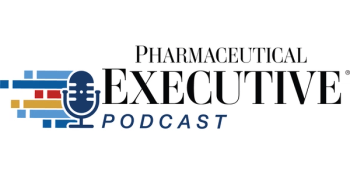
J&J Aims to Reduce Oncology Care Gaps Through Community Support and Seamless Transitions
Biljana Naumovic, US President, oncology, solid tumor, Johnson & Johnson Innovative Medicine, outlines how the company is working to ease care transitions, support community oncologists, and reduce overwhelm in cancer treatment delivery.
In an interview with Pharmaceutical Executive, Biljana Naumovic, US President, oncology, solid tumor, Johnson & Johnson Innovative Medicine, discussed how the company is responding to growing challenges in cancer care revealed by its Oncology Care Index. With 76% of healthcare providers reporting feeling overwhelmed by the pace of innovation, the index offers critical insights into the barriers physicians face when translating breakthroughs into clinical practice. Naumovic outlined how J&J is using these findings to drive meaningful support for oncologists—through enhanced research access, community-based care models, responsible integration of AI, and targeted efforts to reduce cognitive burden across the care continuum.
Pharmaceutical Executive: If the Oncology Care Index were revisited two years from now, what progress would you hope to see—and how is J&J working to help realize that vision?
Biljana Naumovic: Fast forward a few years, and I’d really like to see measurable progress in the key areas we've identified. First and foremost, I hope to see a decrease in the levels of overwhelm reported—particularly by supporting community oncologists with earlier access to information and research engagement.
We're also focused on improving care transitions for patients across institutions, wherever Johnson & Johnson can play a supportive role. Another important goal is increasing the involvement of advanced practice providers and nurses in care delivery—whether in oncology, urology, or other community settings.
These are all areas we’re actively working on. In the disease areas where Johnson & Johnson is directly involved, I’m optimistic that we’ll see meaningful improvements in how care is delivered—making the process more seamless and straightforward for both physicians and patients.
Full Interview Summary: Johnson & Johnson (J&J) launched the Oncology Care Index to better understand the mounting pressures oncologists face amid rapid innovation—highlighting that 76% of healthcare providers feel overwhelmed. In 2024 alone, the FDA approved 50 new indications and 11 new molecular entities, underscoring the urgent need to translate breakthroughs into practical care. J&J uses the index not as a self-promotional tool but as a catalyst for industry-wide dialogue around care delivery, implementation of innovation, and systemic barriers.
Two insights from the index stood out: the difficulty community oncologists face in accessing clinical research and the fragmentation in the continuum of care as patients transition between treatment centers. To address these, J&J is expanding access to community-based clinical trials and co-developing protocols with community providers, particularly in areas like multiple myeloma and lung cancer. They're also pushing for policy changes that support non-academic trial sites. At the same time, the company is investing in training and infrastructure to ensure continuity of care and appropriate treatment closer to patients’ homes.
J&J sees artificial intelligence (AI) as a major opportunity to alleviate provider burden but acknowledges that true adoption requires collaboration across the ecosystem. The company is leveraging AI to improve trial recruitment and streamline decision-making but stresses the need for open, connected databases and industry-wide alignment.
To combat burnout and cognitive overload, J&J is focused on delivering timely, contextualized education and CME programs, supporting advanced practice providers and nurses, and enhancing patient support services.
Looking ahead, J&J hopes to see decreased provider overwhelm and more seamless integration of innovation into care, driven by empowered community oncologists, improved transitions of care, and greater engagement of frontline healthcare workers in both research and treatment delivery.
Newsletter
Lead with insight with the Pharmaceutical Executive newsletter, featuring strategic analysis, leadership trends, and market intelligence for biopharma decision-makers.



